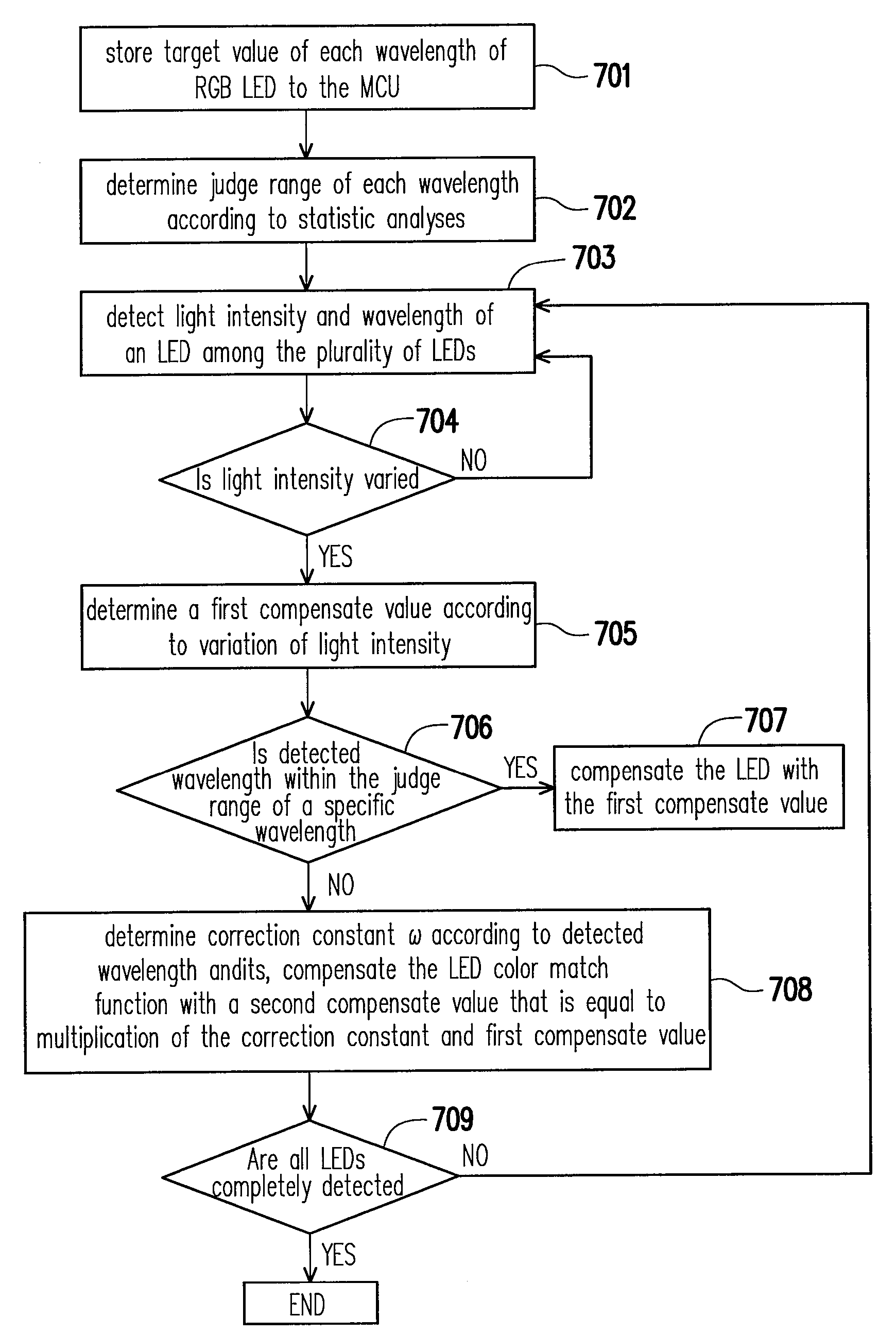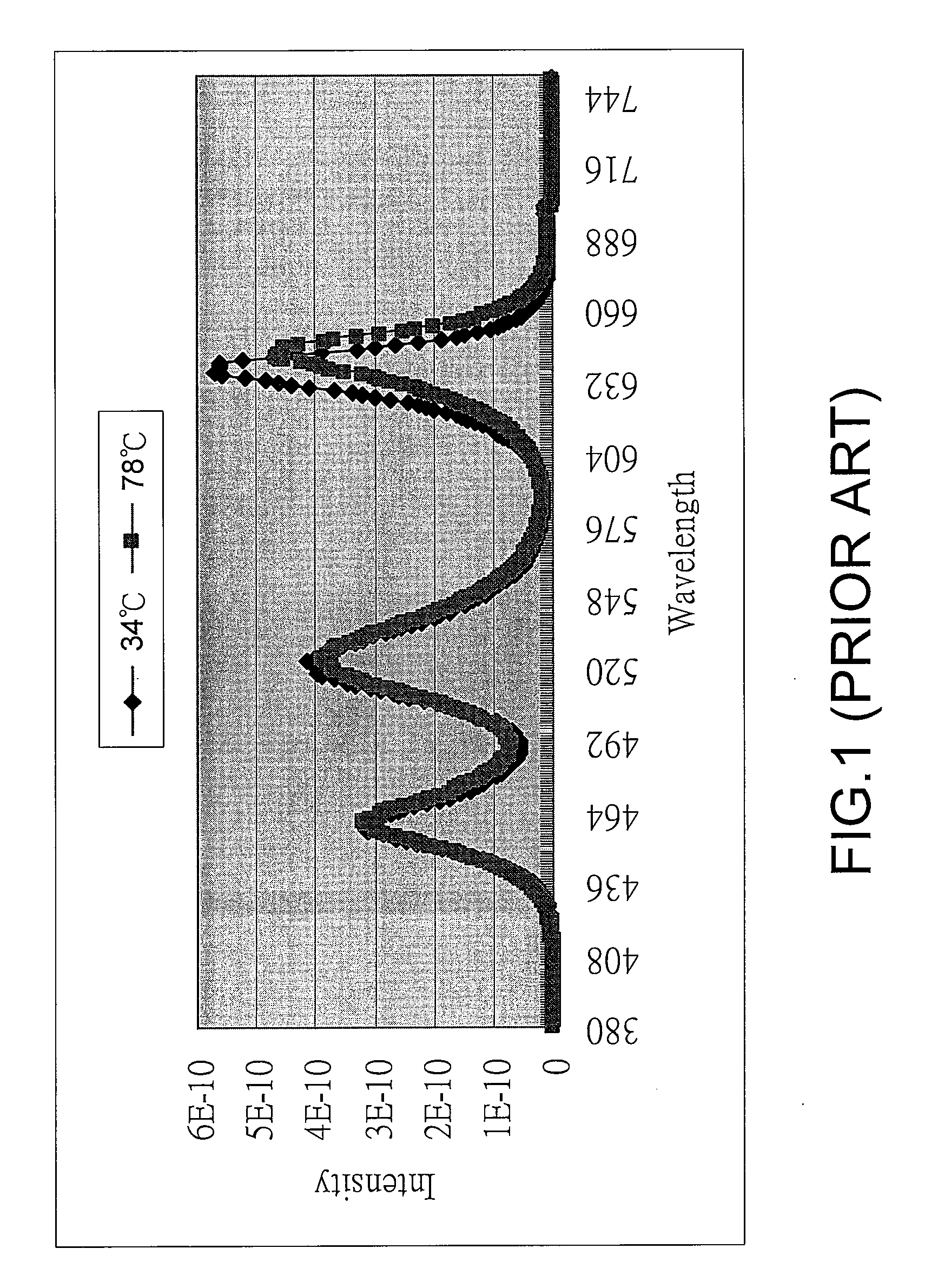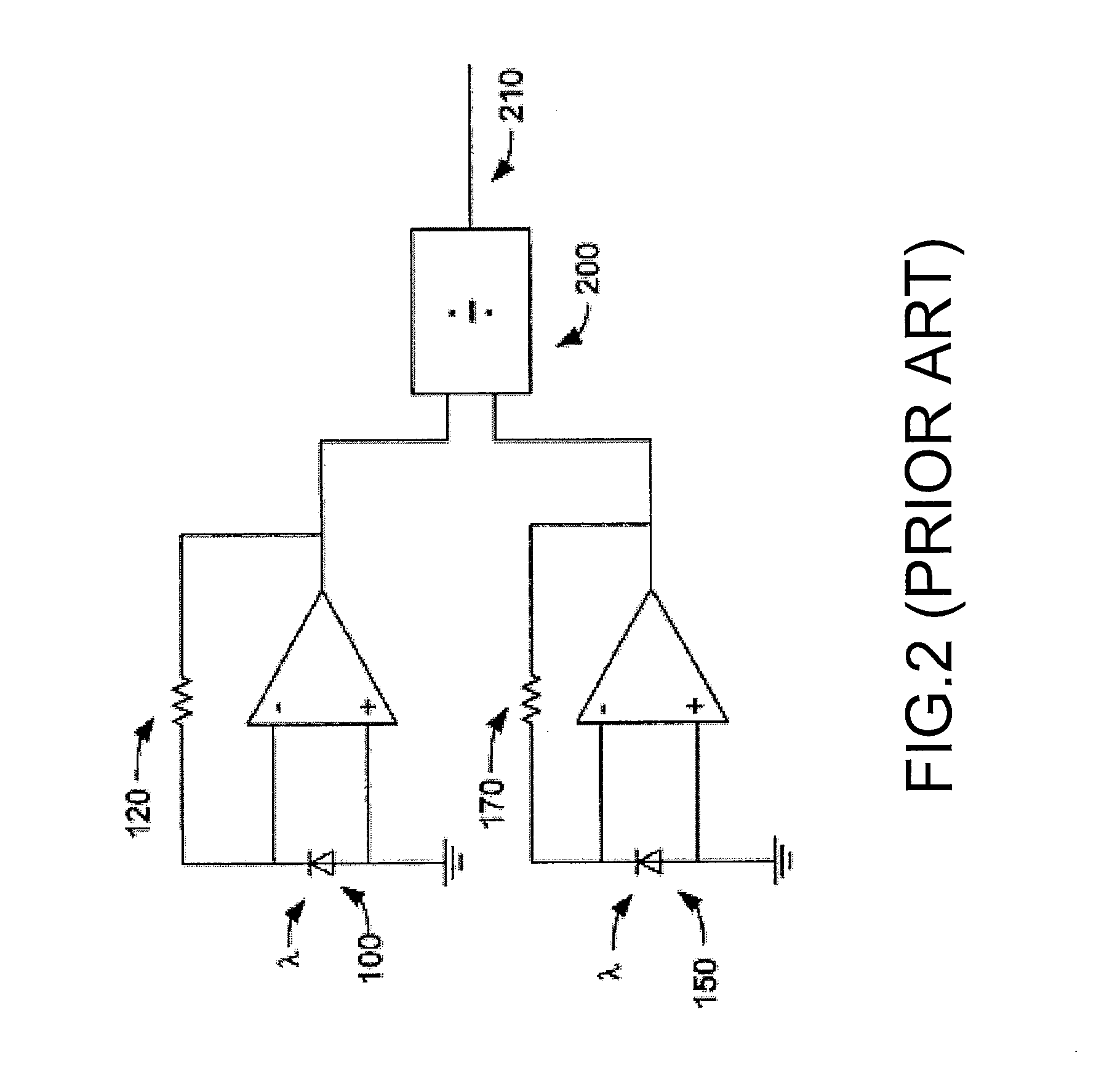System and method for stabilizing wavelength of LED radiation in backlight module
- Summary
- Abstract
- Description
- Claims
- Application Information
AI Technical Summary
Problems solved by technology
Method used
Image
Examples
second embodiment
The Second Embodiment
[0029]The invention can be applied to initialize an LED backlight module because same-colour LEDs within a same production batch usually have uniform wavelengths. Moreover, initialization of LED backlight module cannot take only light intensity into account because the wavelength variation causes a shift of its corresponding chromaticity coordinates, i.e. instable colour. FIG. 8 is flowcharts showing a method for initializing wavelength of LED radiation in the LED backlight module. First, in step 801, target values corresponding to wavelengths of each LED in a reference LED backlight module with N LEDs are stored the MCU, wherein N is an integer.
[0030]Then, light intensity and wavelength of an LED in new LED backlight module with N LEDs are detected, as shown in step 802. The process proceeds to judge if there is any variation in light intensity of an LED in the new LED backlight module when compared with its corresponding LED disposed in the same position in th...
PUM
 Login to View More
Login to View More Abstract
Description
Claims
Application Information
 Login to View More
Login to View More - R&D
- Intellectual Property
- Life Sciences
- Materials
- Tech Scout
- Unparalleled Data Quality
- Higher Quality Content
- 60% Fewer Hallucinations
Browse by: Latest US Patents, China's latest patents, Technical Efficacy Thesaurus, Application Domain, Technology Topic, Popular Technical Reports.
© 2025 PatSnap. All rights reserved.Legal|Privacy policy|Modern Slavery Act Transparency Statement|Sitemap|About US| Contact US: help@patsnap.com



